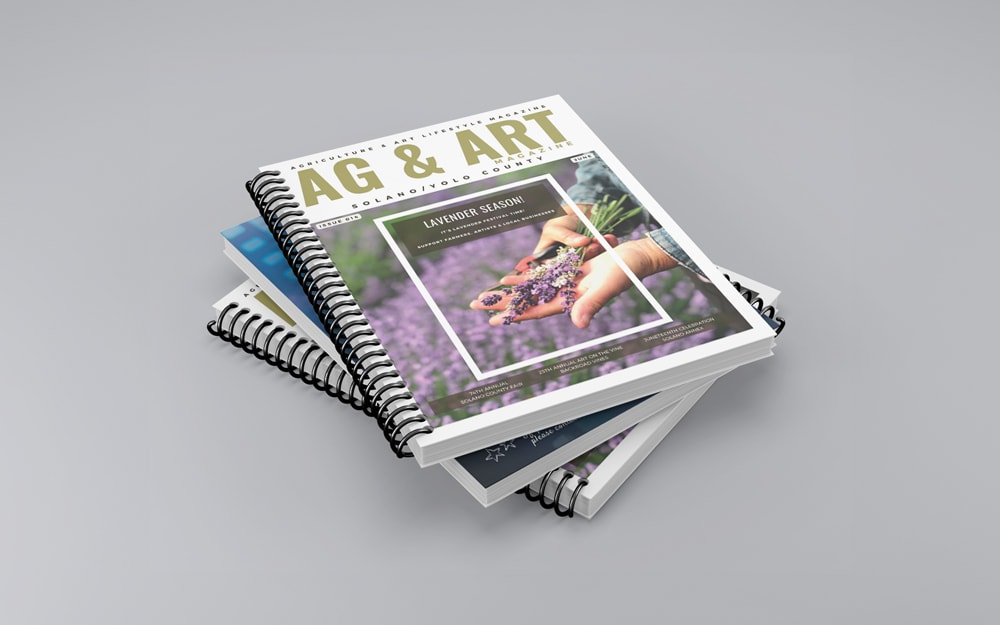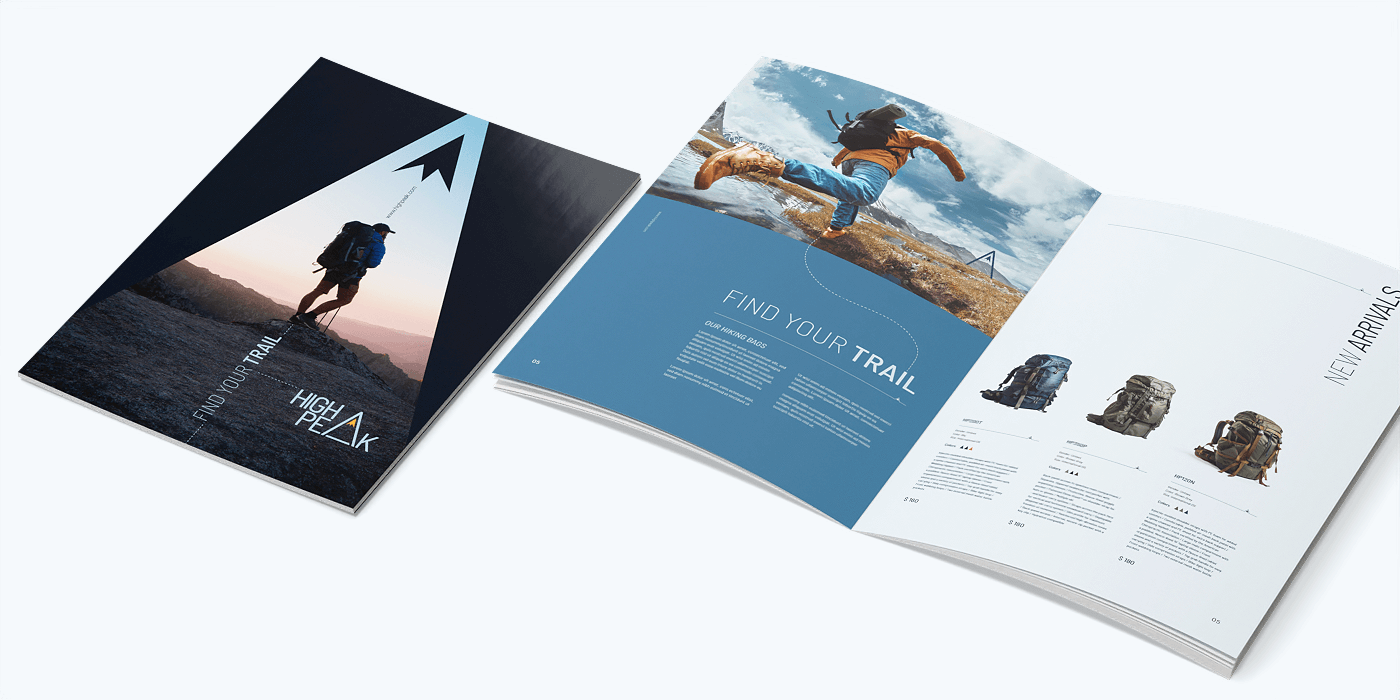Maximizing ROI with Multi-Purpose Booklet Printing Designs
Maximizing ROI with Multi-Purpose Booklet Printing Designs
Blog Article
The Essential Overview to Recognizing Pamphlet Printing Options and Techniques
The process of pamphlet printing entails numerous considerations that can greatly affect the end product. From picking the proper style and size to recognizing the subtleties of binding techniques, each option plays a vital function. Additionally, aspects such as paper stock and printing methods further affect the efficiency of the brochure. As one navigates these alternatives, it ends up being crucial to understand exactly how they adjoin and what that implies for the total result.
Understanding Booklet Dimensions and styles
When considering brochure printing, understanding the numerous formats and dimensions available is crucial for achieving the wanted presentation. Pamphlets can be produced in countless formats, including saddle-stitched, spiral-bound, and perfect-bound, each offering distinctive advantages. Typical dimensions range from basic letter (8.5 x 11 inches) to smaller choices like A5 (5.8 x 8.3 inches), permitting for flexibility based upon web content and target audience.Selecting the appropriate dimension can affect both the layout and visitor involvement. Larger dimensions could match aesthetically driven content, while smaller formats may be much more portable and easy to use. In addition, the variety of web pages impacts the option of binding method, as thicker booklets might need sturdier bindings. Ultimately, comprehending these elements enables a much more tailored technique, ensuring that the final product lines up with the desired message and visual, enhancing the overall efficiency of the interaction.
Picking the Right Paper Supply

Binding Methods: Choices and Factors To Consider
When it comes to binding methods for brochures, numerous options are available, each with unique benefits. Saddle stitch binding supplies an economical remedy for thinner pamphlets, while excellent binding techniques offer a more refined try to find thicker magazines. Wire-O binding sticks out for its durability and ease of use, making it optimal for papers that need versatility.
Saddle Stitch Binding
Saddle stitch binding uses a cost-efficient and practical solution for constructing pamphlets, making it a preferred selection amongst authors and services. This binding technique includes folding sheets of paper in half and stapling them along the fold line, creating a neat and orderly look. Typically ideal for booklets with a reduced page matter, saddle stitching is optimal for publications, pamphlets, and training materials. The simpleness of this method permits for fast production and is typically favored for brief runs or marketing items. However, it is important to keep in mind that saddle stitch binding may not appropriate for thicker booklets, as the spine may not stand up under increased weight. On the whole, it remains a reputable option for several printing jobs.
Perfect Binding Techniques
Perfect binding is an extensively made use of strategy that offers a sleek and expert surface to pamphlets and publications. This approach entails gluing the pages with each other at the spinal column using a strong adhesive, permitting a clean side and the capacity to hold a larger number of web pages contrasted to saddle stitching. Perfect binding is particularly suitable for thicker booklets, such as magazines and annual records, where a durable, flat spine is wanted. In addition, it uses the choice for a published cover that can be made to enhance visual appeal. However, factors to consider such as page matter, paper weight, and the intended use of the pamphlet should be taken into account, as they can affect durability and general high quality.
Wire-O Binding Alternatives
Wire-O binding, recognized for its sturdiness and versatility, uses a superb alternative for booklets that need very easy web page transforming and a specialist look. This binding approach employs a series of steel loops that hold web pages safely, enabling them to lie flat when open. It is particularly suitable for brochures, presentations, and manuals because of its robust nature. Wire-O binding is available in numerous shades and sizes, fitting different web page matters and thicknesses. Additionally, it allows the addition of covers and tabs, enhancing the pamphlet's general aesthetic. Factors to consider for Wire-O binding consist of the option of wire shade, the dimension of the loops, and the degree of modification preferred, all of which can greatly influence the final product's appearance and performance.
Digital vs. Offset Printing: Which Is Best for You?
When selecting a printing approach for brochures, understanding the distinctions between electronic and offset printing is important. Digital printing utilizes contemporary technology to create top quality prints quickly and economically, making it perfect for brief runs or jobs needing quick turn-around times. It allows for personalization, giving the ability to publish on-demand with minimal waste.In comparison, offset printing is a typical method that stands out in creating big quantities with constant high quality. It entails transferring ink from a plate to a rubber covering, after that to the paper, which causes vivid shades and specific details. Nonetheless, balance out printing normally requires longer configuration times and is extra affordable for bigger volumes.Ultimately, the selection between digital and balance out printing relies on project requirements, budget, and preferred amount. For little, time-sensitive jobs, digital could be the ideal selection, while countered may be more suitable for bigger, high-grade productions.

Creating Your Pamphlet: Tips and Best Practices
When designing a pamphlet, cautious focus to format, typeface choice, and shade use can significantly enhance its performance. A well-structured format guides the viewers's eye, while ideal font styles ensure readability and communicate the preferred tone. Furthermore, effective use of color can evoke feelings and emphasize key information, making the total style more impactful.
Picking the Right Design
Just how can one successfully choose the right layout for a brochure? It is important to evaluate the brochure's purpose and target audience. A tidy, organized format enhances readability and involvement. Making use of a grid system can help in aligning aspects consistently, producing a professional appearance. Furthermore, incorporating visual power structure with differing sizes and placements of photos and text can lead the reader's eye and highlight key info. It is additionally vital to leave sufficient white area, which prevents congestion and permits better emphasis. Evaluating different designs with mock-ups can provide insight into how the style executes in real-world circumstances, ensuring that the last item satisfies both functional and aesthetic demands. Useful Picking Proper Fonts
An appropriate font can substantially boost the total design of a pamphlet, complementing the design and enhancing the web content's message. The option of typefaces need to consider readability, especially for body message, as it assures the information comes to all visitors. Sans-serif font styles are commonly liked for electronic styles, while serif typefaces can lend a conventional feel in published products. It's a good idea to restrict font options to two or three to keep aesthetic coherence. Additionally, typeface dimension plays a crucial function; headings ought to be not frustrating however distinct, while body message must be comfortable for reading. When selecting font styles, positioning with the booklet's motif and target market is vital for reliable interaction and aesthetic appeal.
Reliable Use of Color
Shade functions as an effective tool in pamphlet style, forming perceptions and leading viewers emotions. It can evoke feelings of exhilaration, calmness, or depend on, depending on the colors picked. Designers must take into consideration color theory concepts, making sure that the selected scheme lines up with the brochure's message and target market. For example, using cozy colors like red visite site and orange can create seriousness, while cooler tones like blue and environment-friendly foster tranquility.Additionally, contrast plays a vital role; corresponding shades can enhance readability and visual allure. Uniformity in shade usage across pages even more enhances brand name identification and communication. Inevitably, reliable shade execution not just records focus however also enhances the brochure's function, making it an important aspect of successful design.
Finishing Touches: Coatings and Unique Effects
While numerous think about the material and layout of a booklet one of the most critical elements, the completing touches, such as finishings and special effects, play an essential duty in boosting its overall charm. Coatings can provide defense and durability, making certain that the pamphlet holds up against wear and tear. Matte finishes supply an innovative, non-reflective surface, while shiny coverings can make shades appear even more vibrant and appealing. Unique results, like embossing or aluminum foil marking, add a responsive dimension that can develop a remarkable perception. These techniques can highlight certain areas, accentuating crucial details or producing aesthetic passion. Furthermore, UV covering can provide a high-shine surface that elevates the general look.Together, these finishing touches not just enhance the booklet's visual but additionally communicate professionalism and interest to information, inevitably leaving a long lasting effect on the visitor.
Price Considerations for Brochure Printing
Recognizing the numerous expense factors to consider for booklet printing is necessary for businesses and organizations intending to maximize their budgets. Secret variables influencing costs consist of the choice of ink, paper, and binding approaches. Better materials, such as superior paper or specialized inks, generally boost the total expenditure. Additionally, the size and page count of the booklet play a considerable function; bigger brochures call for even more sources and time to produce.Another crucial consideration is the printing method, whether electronic or offset, as each has its own pricing structure and suitability for different quantities. Services ought to also factor in design prices, which can vary based on intricacy and using specialist services. Eventually, delivery and handling charges can add to the total amount, specifically for huge orders. By reviewing these components, companies can make informed decisions that align with their economic capacities while attaining the preferred high quality in their published products.
Regularly Asked Concerns
What Are the Environmental Impacts of Booklet Printing?
The ecological impacts of booklet printing consist of logging from paper production, carbon emissions from transport, and waste generation from thrown out materials - Booklet Printing. Sustainable practices, such as making use of recycled paper and green inks, can alleviate these impacts
How Can I Make Sure Color Accuracy in My Pamphlet?
To ensure color precision in a brochure, one should use calibrated displays, utilize professional shade profiles, perform examination prints, and select high-quality printing solutions that provide shade matching and proofing choices for ideal outcomes.
What Is the Typical Turn-around Time for Booklet Printing?
The regular turnaround time for pamphlet printing differs depending upon the intricacy and quantity - Booklet Printing. Generally, it ranges from a couple of days to two weeks, affected by aspects such as printing techniques and finishing demands
Exist Minimum Order Quantities for Brochure Printing?

Can I Print Booklets in Several Languages?
Printing brochures in numerous languages is feasible. Lots of printing solutions use options for multilingual or multilingual layouts, enabling for reliable communication. Careful preparation guarantees that create components suit numerous languages without endangering readability or looks. In addition, factors such as paper stock and printing strategies more affect the performance of the pamphlet. When considering pamphlet printing, recognizing the numerous layouts and dimensions offered is necessary for accomplishing the preferred presentation. When selecting a printing method for pamphlets, recognizing the distinctions between electronic and balance out printing is vital. Furthermore, the size and web page matter of the brochure play a significant duty; bigger brochures require even more resources and time to produce.Another this hyperlink essential factor to consider is go now the printing strategy, whether electronic or balanced out, as each has its own rates framework and suitability for various quantities. The ecological effects of booklet printing consist of logging from paper production, carbon exhausts from transportation, and waste generation from discarded materials.
Report this page